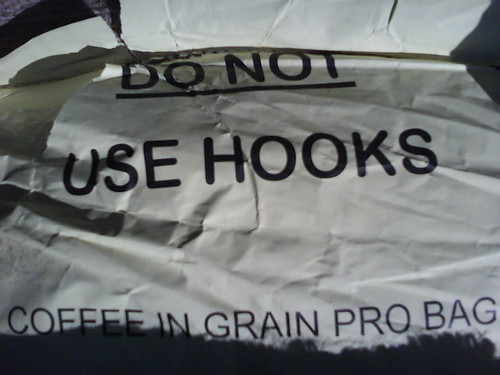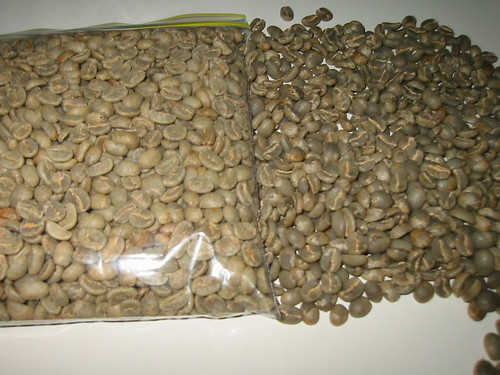 Rice is about as commodity as it gets. Well, I like to think that but then I have been noticing that even with something like rice, care given to packaging is moving well ahead of what we deal with in green coffee.
Rice is about as commodity as it gets. Well, I like to think that but then I have been noticing that even with something like rice, care given to packaging is moving well ahead of what we deal with in green coffee.A trip to the local mega asian grocer (Kan Man in Quincy) led me to make note of a few interesting things with one strong observation, the packaging is getting serious.
At our local Korean grocer in Union Sq. Somerville, there is an assortment of rice available in many grades. What's interesting about it was how they noted crop year and an emphasis on packing as each bag had it's own 'patent pending' method of storage. Most of which seemed to be nitrogen flushed or tightly vacuum sealed which I must say does seem to make a difference.

In wandering around Kan Man viewing the stacks of vacuum sealed rice varieties stacked on the shelf, that I had a good chuckle. So much obsession over rice, a product I have been used to seeing in bags akin to dog food packaging. Then it hit me how young our coffee industry is and how absurdly ironic it was.
The fact that preservation packaging is still such a novel and absurd idea really instills a sense of how far coffee still has to go and just how far behind it is. The truth is that there is so much information out there to digest and yet not nearly enough quality data therein. Like most things coffee, too many opinions and not enough data or research being done.
Without vacuum packaging, our business would not be enjoying it's first year in celebration. Putting it in perspective, packaging for preservation makes a difference and we have the experiences under our belt to prove it. If other people don't agree with us, that's fine because everyone needs to learn their own lessons but we know what works and will keep working with it.
As the weather turns, let's keep an eye on the temperature and think about the effort that goes at every stage into one taste of coffee down the line. There are so many things that can destroy a coffee from the time is is picked through processing, transport, the roast, and then with brewing at the barista level. It does not begin and end solely in the hands of a barista, it's a process that started months ago and continues even while sitting in a warehouse.



